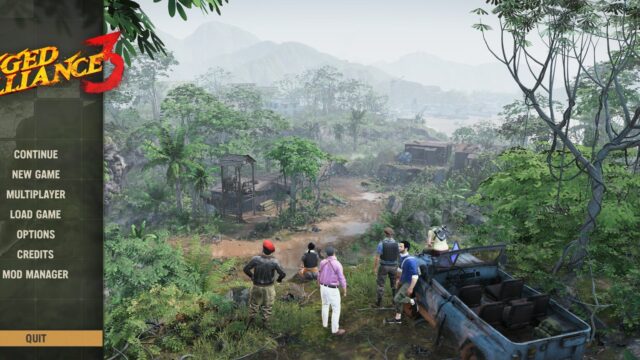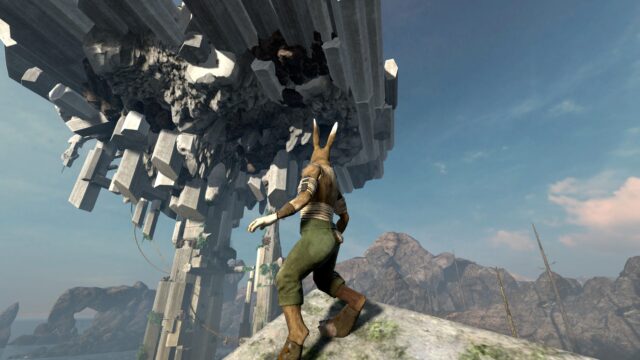Civilization 6 – New Features, Flaws, and Overall Impression

News of the hour: Civilization is as good as ever. The global turn-based strategy game about achieving scientific victory on the 300th turn and nuclear war, just to appreciate it, is indestructible. The brilliant mechanics of the very first installment have shed excess fat over the years and simultaneously added new elements that make the game deeper and more interesting. The sixth installment in the series has not deviated from its course.
A brief summary of the greatest global strategy game of all time for the uninitiated. We are given a whole planet, two units, and many, many, many turns to grow into the coolest local power. And also to build pyramids, discover steelworking, start mining uranium, and send the Hubble telescope into space. And somehow, individual gameplay elements like city-building or terrain exploration combine so well with each other that you sit down for a session on Monday and get up from the computer when it happens.
Of course, you don’t understand everything in the game right away, but once you do…
The developers had a tough task – there were no flaws in the fifth installment, so there was nothing to fix. I am happy to report that Firaxis studio has successfully managed to not undermine the foundation of our beloved “Civ” with a solid 98%, and the unfortunate 2% mostly concerns the client code rather than the gameplay. We exhale and shout a triple “Hooray!”
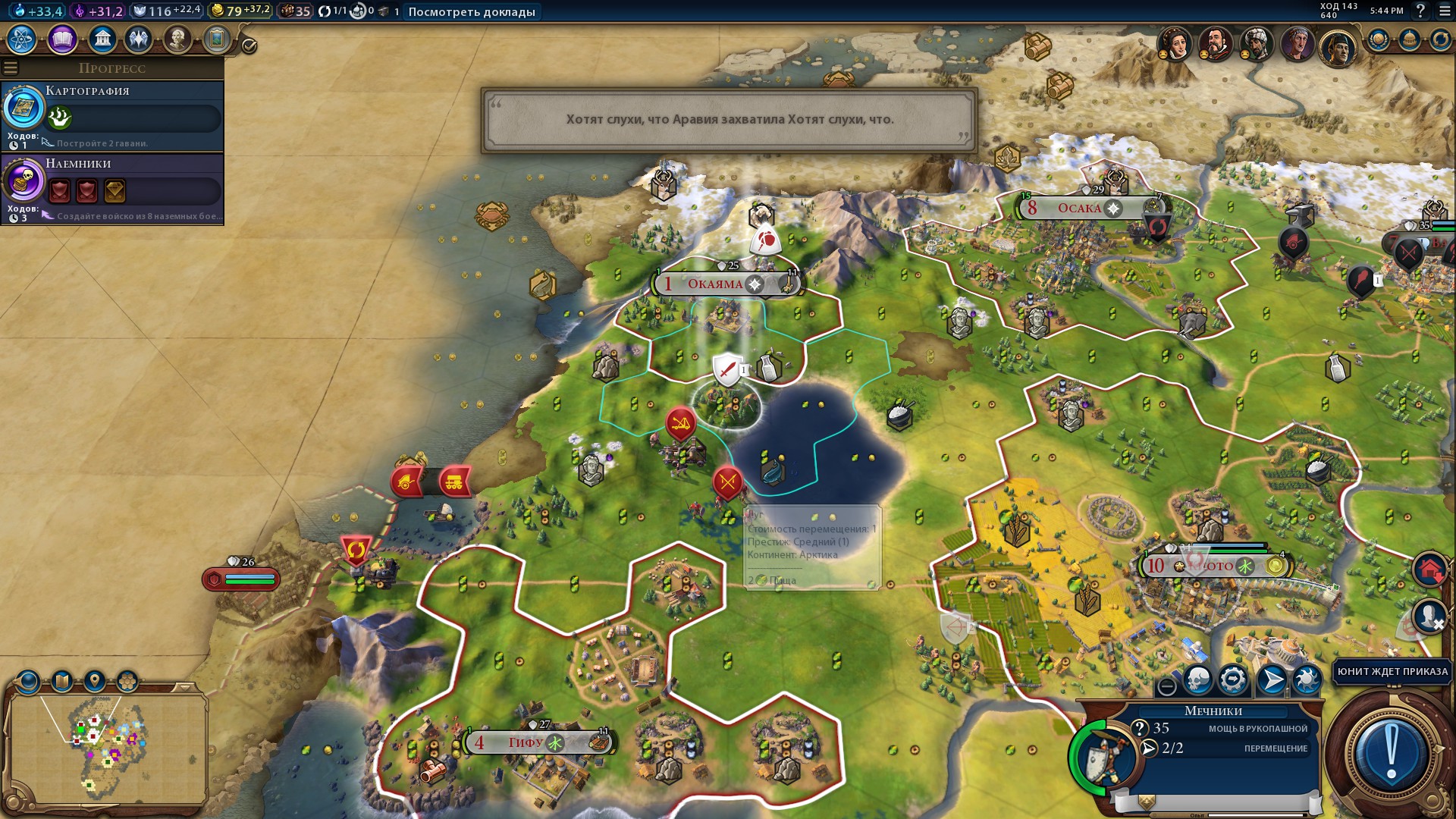
Civilization 6, Russian localization and eager rumors.
Therefore, discussing the old-new nations with their units, perks, and other bonuses is of little significance now. A thoughtful tasting of the new game balance will take about three hundred hours, and so on… The Greeks are cool, they have an additional culture and a free slot in the government! Peter the Great is a harsh resourceless hardcore of the taiga! Congo has no religion! It is better to immediately give Civ6 a rating of 8/10 in mind for all the standard happiness of the series and switch to real changes.
Districts, neighborhoods, puzzles
Civilization 6 will be remembered by fans of the series primarily as a series in which cities began to be built in a new way. Single-cell rubber settlements that sucked resources from neighboring lands and nothing more are a thing of the past. From now on, craftsman’s quarters, circus squares, and other wonders of the world must be built on adjacent cells to the city center.
A seemingly insignificant innovation has turned urban planning into a puzzle even more challenging than Candy Crush Saga. To build a factory, you first need to allocate a cell for a craftsman’s quarter, and to allocate a cell for a craftsman’s quarter, you first need to grow the city to, let’s say, seven inhabitants, because you have already built two quarters, and you can’t build more at the moment. Moreover, when building a quarter, you will inevitably have to sacrifice either a sawmill or untouched but useful jungle areas in terms of bonuses. And to ensure that the wood does not go to waste, you first need to make builders who can convert the wood into fifty gears. But then you will also need to make, let’s say, crossbowmen in front of the craftsman’s quarter, because the construction queue will automatically clear the forest ahead of the workers.

Congratulations, we finally built the factory and invested in capital. Now we need to develop a district called “Commerce Center” somewhere and somehow fit in the Hermitage.
Regarding the last part, though, it’s better to think ten times.
Useless wonders of the world
The main wonderful surprise turned out to be Stonehenge. The bonuses that were given for its construction, plus six to faith and plus one to engineers from the previous series, were replaced by the instant appearance of a great prophet. And the dead cell, which doesn’t give anything at all except useless bonuses to neighboring districts.
Instant religion, in turn… doesn’t help. The early start of your small national sect in Civilization 6 is not as necessary as in Civ5. Faith points still mainly come from the pantheon and the religious district. Which, by the way, you didn’t build because you were busy with Stonehenge. Now build a district as well, otherwise you won’t get any unique temples, missionaries, and apostles, which, in general, you should focus on for boosting faith.
Excellent wonder of the world. Time and production points were spent, the tile next to the city fell into a black hole, the bonus production didn’t work out, the tech tree, for which the wonder was built, is actually at a standstill. Great!

If you think about it, Stonehenge in Civ6 is not that bad. As an option, it can reserve some Confucianism for you, and then for a thousand – or even two – years, completely forget about religion and indulge in military pleasures.
Why am I saying this? From now on, wonders of the world are not just a dumb way to boost the power of civilization: you can’t build a capital with twenty inhabitants, a hundred production, science, and gather all the unique buildings in the city. Firstly, there are too many of these unique buildings now, secondly, every first tile counts, and thirdly and most importantly, unthoughtful spamming of all wonders of the world in a row does more harm than good.
As for me, I think it’s great. The fewer elements in the game that can be clicked on autopilot without any second thoughts, the more interesting it is to play “Civilization”.
Ministry of Internal Affairs
The second big news for Civilization 6 fans is the branch, um, of political discoveries, running parallel to scientific discoveries. From now on, culture points will mainly accumulate in it.
The overwhelming majority of political technologies provide new “cards” of internal state bonuses. For example, practically from the start of the game, your civilization will receive four potential perks. Two of them will be of a military nature, two – of a production nature; there will be one slot for each type at the start. You will have to choose where the nation will steer.
Confused? No problem, let Civ6 take the lead, and it will guide you through all the main points of the new mechanics.
The further into the game, the more slots and development options there are. Our internal policy is a flexible tool suitable for plugging various gaps like a dead budget or zero diplomacy, as well as for strengthening advantages, for example, in science.
Some cultural institutions also provide buildings, districts, and other units. Make sure not to miss half a turn with suburbs.
Of course, the political mechanics are not fully polished yet. The real-real policy tree of Civilization will probably only be obtained in the seventh series. Right now, it seems that the designers themselves do not fully understand how this happiness should be hidden, and therefore they resort to simplifications and compromises. The most obvious of them reveals itself in the institute of political philosophy, which immediately opens all combinations of bonus slots for antiquity. The eternal starting algorithm of each first civilization is to learn the basic institute, and then go into the tree of discoveries and click on autopilot until this very political philosophy, because why do you need everything else when there are only two slots for cool stuff.
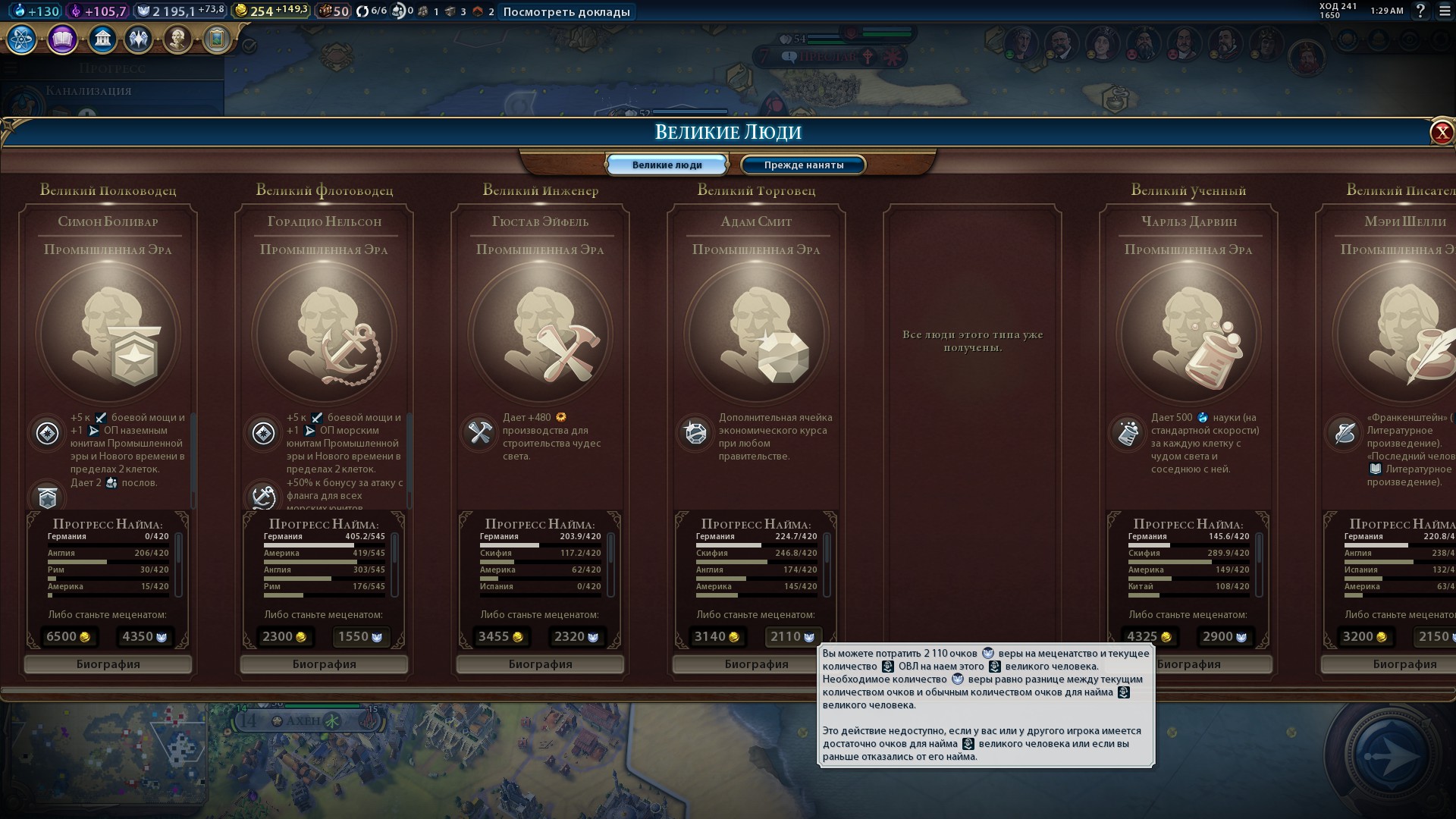
In general, the impressions of the new domestic policy are strictly positive. The tundra-like Saint Petersburg is also not built overnight, the main thing is a strong foundation.
The maneuvers
War is everywhere. The nation of love and peace is like a new unicorn on the local continents. Oh, where have my peaceful borders from the previous part gone?
When you’re really lucky, barbarians sprout right next to you and have fun at your borders from the very first move. And here’s the trouble, you can’t fend them off with just two archers anymore. Cities no longer shoot! At least, not until the cities have walls. And walls, I apologize, are a whole technology, and n turns to build, and so on. The greedy lover of ancient wonders quickly learns this sad fact and quickly starts a new game.
And here, a paradise island next door tempts you to bankrupt yourself on a new batch of settlers, hanging gardens entice with bonus population growth, and you have to churn out swordsmen. Because otherwise the settlers won’t make it, and the gardens will only be built by the year 1000 AD. And not by you, but by some lousy computer dummy playing as China. It’s time to conquer China.
Anyway, those perpetually bad AI civilizations won’t leave you alone anymore. Shady figures at the border now gather the courage to cross that very border much faster than in Civ5. There, some Siam could spend the whole game conducting harsh maneuvers on the neighboring territory, criticizing your government and lingering at your doorstep until your scientific victory. No, on the fifteenth turn the barbarians will come, and on the thirtieth, Toyota chariots with missionary trailers will go on a joyride.
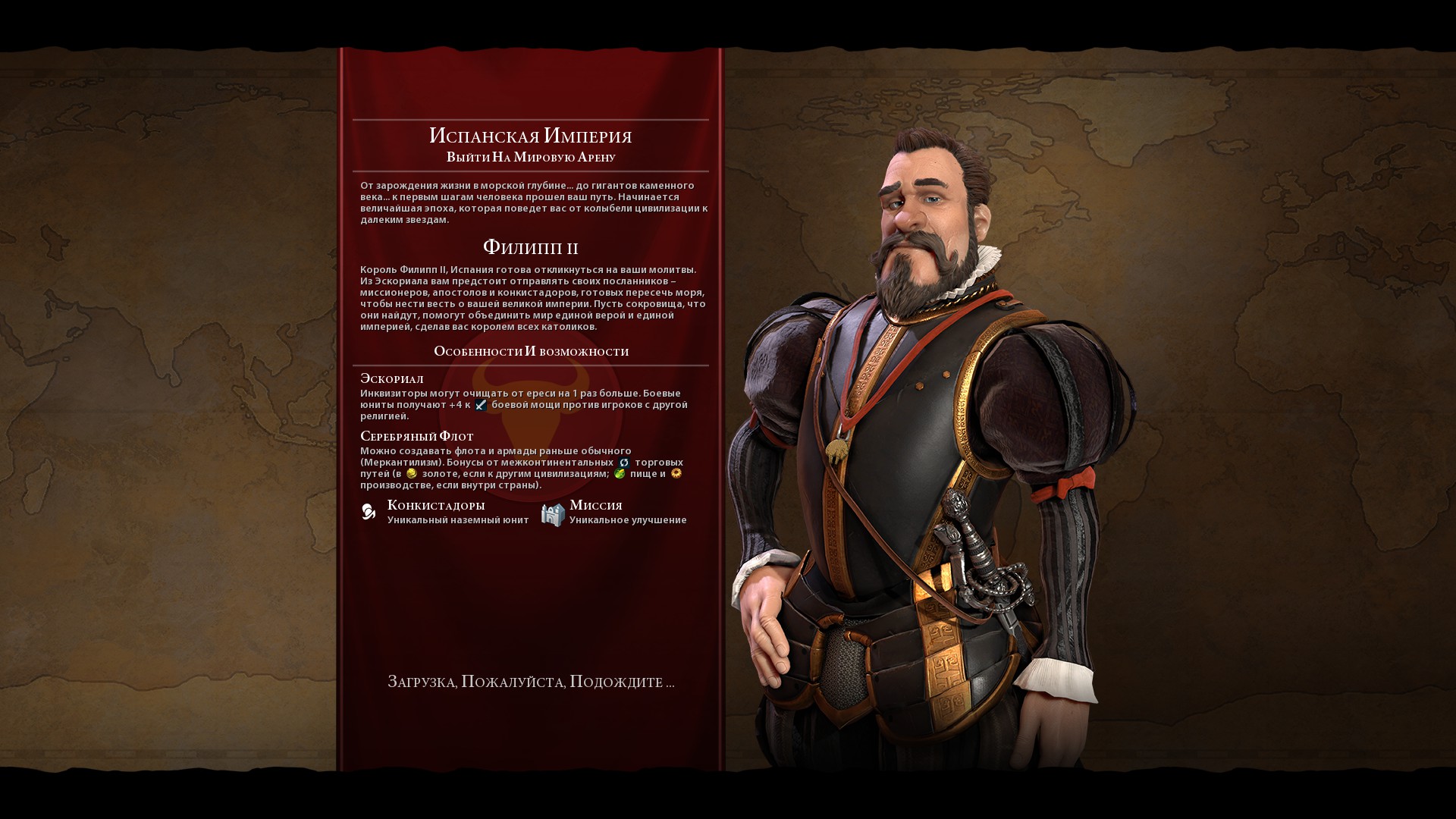
The sharp contrast with the previous part initially throws you off track. However, you quickly get back into it, and you get so involved that you start renting out the military corps of city-states.
About renting, though, it’s not a funny joke. The idea itself of hiring some Swiss guys sounded great in press releases and would have been interesting in reality if it weren’t for the fatal defect of the dummies responsible for policies. Comrades categorically refuse to update the technology park. The only effective way to make a city-state produce a unit that is at least one generation behind the world’s NTP is to reset its personnel. So, either you buy useless soldiers, drain them, and wait for the weather by the sea, or you go to war yourself. Beating up an ally to make them stronger – excellent logic, I must say.
It’s a shame that the adequacy of actions of computer players (whether civilizations or just city-states) hasn’t increased.
Diplomacy of bots
No analysis of any global turn-based strategy game is complete without a passage about artificial intelligence and its tactical, diplomatic, military, and other genius. Or the lack thereof. The main reason for this is the endless barrage of concentrated PR nonsense that is generously fed to us before every first release.
In the case of Civilization 6, there was some new cool diplomacy about Hidden Agendas on the agenda. Supposedly, leaders of other civilizations will have one open life priority and one hidden one. With the open agendas, everything is clear – the Norwegians love ships, China wants to build all the wonders of the world themselves, Rome is favorably disposed towards states with large territories, and so on. But hidden agendas are some kind of secret political doctrine that you either have to guess or simply spy on to find out what each leader wants.
Great, except I already know what everyone wants. Everyone wants to win. And no matching interests or similar policies will prevent them from condemning you and declaring war if the opportunity arises. The question is only whether this will happen after n turns of a friendship declaration – hooray, your interests align! – or just like that. So far, the biggest computer beauties encountered in Civilization 6 are the Japanese. The nation was so delighted with my cultural development that it wanted to declare friendship with me and, receiving an affirmative answer, rolled out its entire army to my borders within three turns. Then Japan, of course, waited for the declaration to end and went to war with its cultural idol as if nothing had happened.
What exactly the mechanics of interests and the new cool diplomacy affect is still a mystery to me.

But the new mechanic of relatively fair resource extraction from city-states turned out quite well. The unclear friendship points from the previous part of Civ6 were converted into envoys. The new conditional unit of influence on a city-state is good primarily for its clarity. So, the city-state gave you a quest – “Build a battleship.” Did you complete it? Well done, get one new envoy in the city-state.
Full colonial happiness with bonus production and transfer of rare resources is achieved with at least six envoys. Then the city-state recognizes you as its suzerain, and everything becomes good. With one caveat. If you have, let’s say, eight of your noble French diplomats in Carthage, and nine dirty Norwegian Vikings, then the Carthaginian truffle and Carthaginian intelligence will go to the Vikings, so you can’t relax.
Becoming the suzerain of each first city-state is realistic, but difficult and most likely won’t work out. You can’t predict these city-states – sometimes you are their friend, sometimes they are seduced by a neighboring scoundrel. But now city-states are included in the game practically from the first turn, and not from the moment when you have a bunch of extra resources to bribe random princes.
Underdeveloped interface
If there was at least one blatant failure in Civilization 6, it would be, um, the game client itself. The developers did a decent job with the new interface design, properly organized the controls, and created a pleasant tileset, but it seems they simply didn’t have enough time to thoroughly test and polish everything.
The first issue arises in the starting menu. It completely refuses to remember the settings of the last played game, forcing you to reset the difficulty, map type, game speed, and civilization every time. I can’t even remember exactly when “Civilization” learned to remember game settings, and now, sudden regression. One could assume that the game intentionally resets everything, like a new game means new arrangements, but… They shouldn’t have fixed what wasn’t broken. I’m afraid the forgetfulness of the starting menu in Civilization 6 will endlessly irritate me.
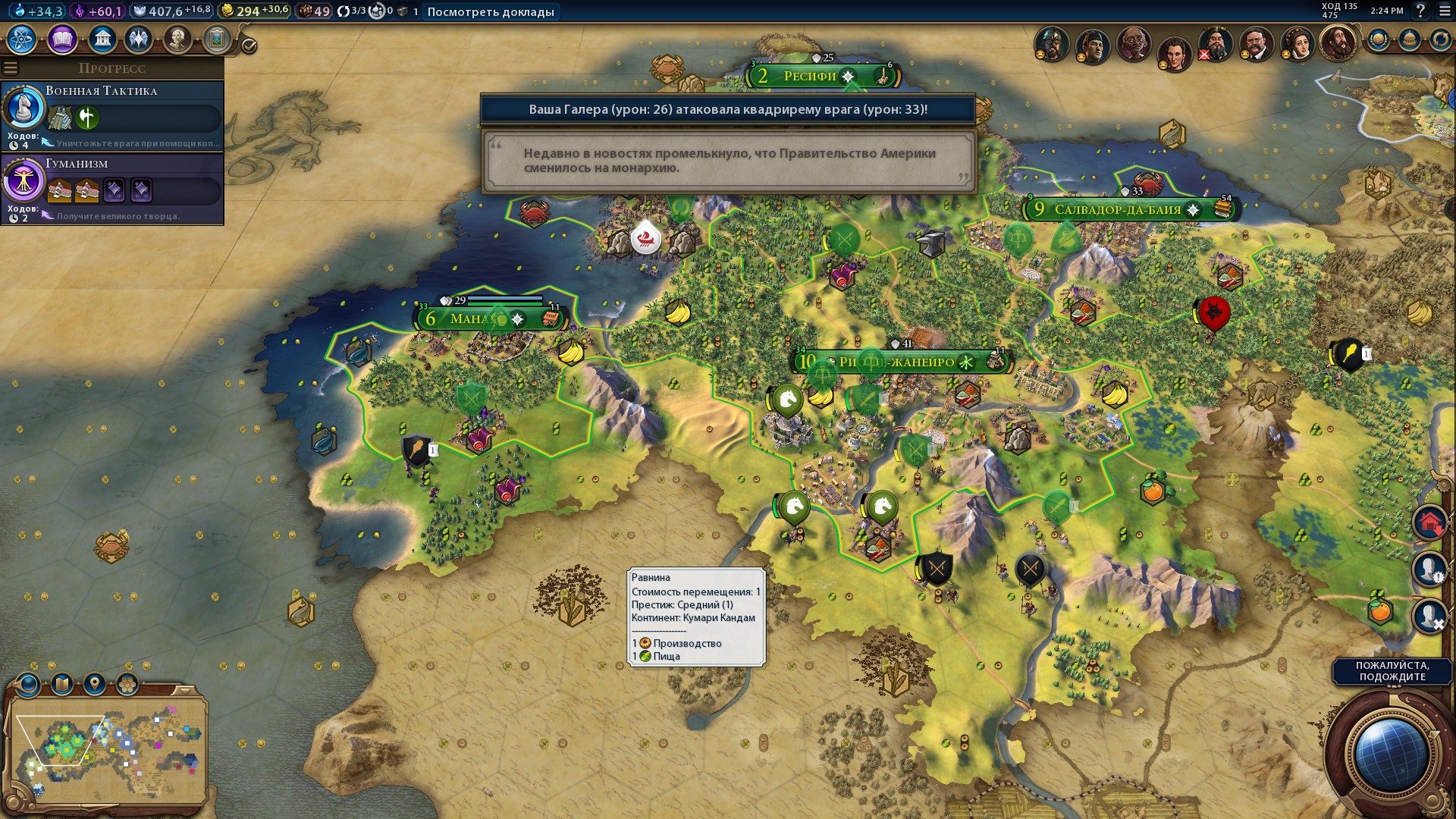
The second call rings on the first move, where the client again resets the settings, this time – the display of cells. Aren’t you tired of rearranging the game settings tiles? Great, here’s another groundhog day for you, where the traditional construction of the capital and sending warriors on reconnaissance is accompanied by the perpetually unchecked box “display resource scores on cells”. Well, I like it when I constantly see how much corn, rusty gears, and gold coins my banana plantation produces, let me check that damn box once and for all.
The third and most important call rings when the automatic unit switching system is triggered. Oh, gods of “Civilization”, why can’t I choose units in the order I want? Why do I have to give the command to THESE SPECIFIC SCOUTS instead of dragging archers a couple of cells to the right, miss due to automatic switching on the map, and send the wrong units where they shouldn’t go? Why, why do you do this? Didn’t any of the testers tell you how annoying it is?
There are still a bunch of rough edges in the Civilization 6 interface, but compared to the three leaders, they don’t even bother me. Did the city menu degrade? Well, okay, at least it doesn’t jerk you between different settlements, and anyway, what’s two extra safe clicks in the menu after suicidal maneuvers with catapults.
We are waiting for the first expansion and hoping for adequate patches.
**
How much did the innovations of Civilization 6 raise the game above the unsinkable eight? I would say that now Civ6 deserves nine out of ten points. All the new mechanics are unquestionably good, but they naturally suffer from growing pains, where can they go. Minus half a point for the game client’s occasional frenzy and minus half a point for spies stealing masterpieces of art from my capital.
Civilization VI: Rise and Fall
We quickly fell in love with the new mechanics. sixth episode of Sid Meier’s Civilization, new graphics and new leader figures for civilizations. We quickly admitted to ourselves that we actually liked the old picture more and that we have some complaints about the overall design. After experiencing both the initial surge of enthusiasm and some disappointment, we concluded that the novelty is good, but it immediately calls for a large (by the series’ standards) expansion and calibration.
And now the time has come. Hooray, fellow strategists, the long-awaited Rise and Fall add-on has finally arrived!

But before describing the innovations of RnF, it is still necessary to take a second look at what has happened to the original game since then. After all, in a year and a half, the developers managed to release several serious patches and even really fix something. The fixes affected many things – numbers were adjusted, icons were screwed on, interface elements were separated from each other. The game really changed two and a half times.
The bonus half of the medal for design courage goes to the developers responsible for balancing the numbers. At one beautiful moment, these people decided that port districts should give cities more money, and they were right. Separate rewards await unknown heroes who convinced them to finally put the “Start a game again with the last set game conditions” button and the option “Don’t think that the game is smarter than the player and don’t give him units to smear them on the map and send workers to besiege cities” in the Civilization 6 client. In the client, both saving options are, of course, written more concisely and do not provide context, how much their absence annoyed and how much worse it was to live without them.
When fans of the series refuse to move to the new client and write disappointed comments like “I don’t know what exactly happened, but Civ has gotten worse,” they are actually writing not about districts, not about the cartoonish map, they, without knowing it, are mostly writing about the obvious options that are missing. My personal correction lottery card turned out to be almost closed by the release of Rise and Fall. The developers only had to enable the option “Immediately show resource scores on cells” for me.
Finishing the conversation about the transition period between the vanilla game and the expansion, I will note that all the released additional civilizations and scenarios are the same abominable greed as before. Dear fans of Civilization, download amateur modifications and buy insignificant official DLC only on sales, for a few cents for the full set. Don’t feed greedy marketers.
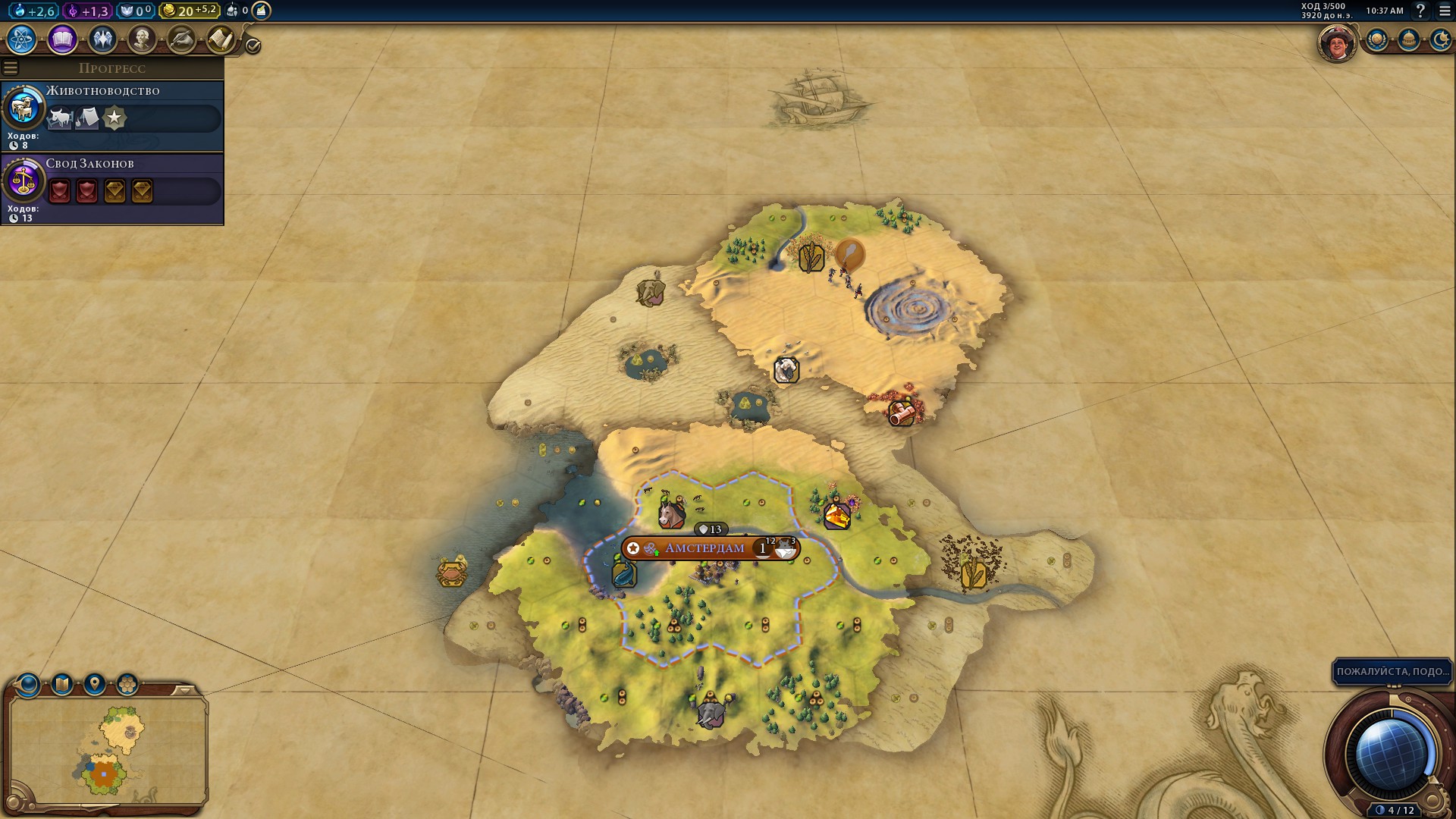
All right. Now we have definitely reached the main course. Rise, therefore, and Fall, golden ages and dark ages. Stories of the rise, decline, and rebirth of civilizations.
A veteran of the strategy series will immediately remember that golden ages were already present in the game, and they would be partially correct. I would say only by a third. Yes, we don’t have to look far for examples, as in the fifth installment, a piggy bank of golden age points was attached to the top bar of resources, and when it overflowed, the civilization would receive 10-15 turns of enhanced everything, from economy to military power of units. But, I repeat, it was just a piggy bank where excess happiness of the population was poured, and that was it.
RnF raises the question more sharply. What really sets apart a great civilization from city-states? It shapes history – clearing the land of barbarians, mastering metalworking earlier than others, establishing religions, colonizing empty islands. A healthy nation is not a passenger on the steamship of history, but its captain.
Let’s develop this flat analogy and start awarding our captain medals for successful maneuvers, such as capturing an enemy capital or constructing a district with a +4 bonus to science. Or for the debut purchase of a unique military unit of the civilization. In other words, the less time you spend idling, the better. After n dozens of turns in a Rise and Fall game, it will want to evaluate whether we did well or not. The evaluation is individual, there is no need to compare achievements with neighbors. A satisfactory result will not change the course of the game, except for providing an additional reliable way to earn medals. True achievers will enter a golden age with one serious pleasant bonus of their choice, while intermediate failures will have to endure a dark age.
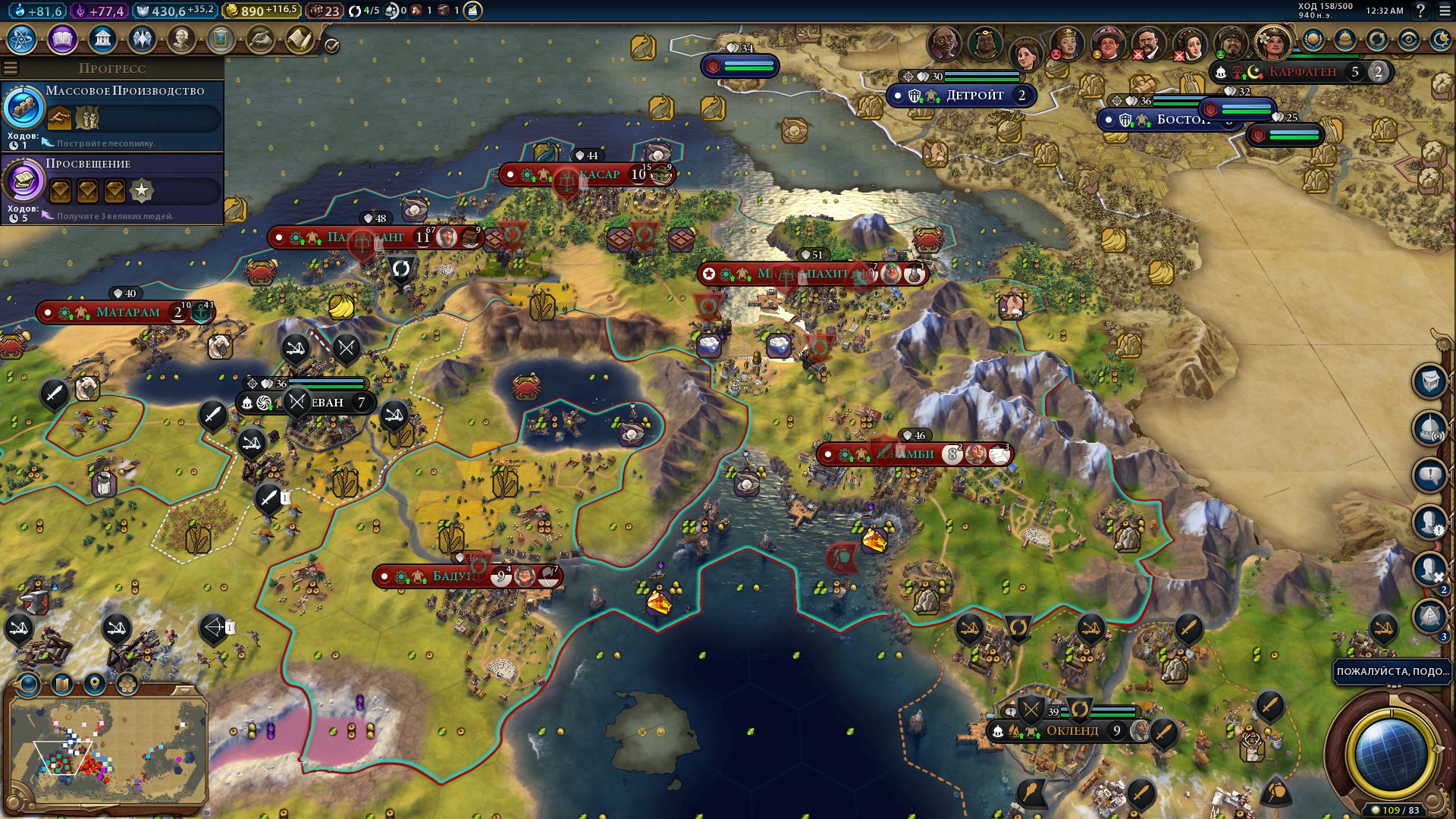
The main – and essentially the only – penalty of the dark ages is a decreased loyalty of the population. Loyalty is like an old-new rebellion counter on a ship. When it’s eternal night outside, the residents “generate” less loyalty than usual, the country is at war or simply cannot reach the next cell with a unique rare resource, cities begin to detach from civilization. Not generating suspiciously rebellious rebels, not stopping any construction, detaching and turning into free cities.
Free cities, in turn, fight against everyone at once, but at the same time they are morally ready to switch sides. Plus, capturing a free city does not provoke wars with its former owner, so yes, it’s better not to lose cities in turmoil.
Another interesting point related to the loyalty of cities is associated with the founding of new settlements. More precisely, with the fact that you can no longer just stick an outpost under someone else’s capital, seizing valuable cells. Because neighboring cities emit the same loyalty as religion, and a city built halfway across the continent from your actual borders, but right next to another civilization, will naturally switch to a new roof in a dozen or so turns.
Which, you must agree, is logical.

Nevertheless, it is still allowed to build bold outposts, although it has become troublesome. For example, in disputed lands, it will be necessary to send a governor.
Another innovation in RnF is the magnificent six governors, sitting in cities and helping to develop them in the right direction. For instance, in a northern city, founded with the goal of developing two iron tiles and not receiving enough food for growth, there is an option to appoint a resourceful steward with a bonus in food production.
The list of available governors and their sets of abilities is always the same; pre-release promotional videos gave me the impression that there would be about twenty different governors, that they would all be unique, and it would be impossible to hire them all on one map. In reality, hiring all six of them is not a big problem, but fully leveling up each governor is probably not possible.
Nevertheless, newcomers to “Civilization” give gamers extra room to maneuver, which is always pleasant.

In the first weeks after the release of the original Civilization 6, a friend told a joke about a multiplayer game. On the very first turn, one of the players complained about respawning in the tundra and was eliminated. Building the Great Iceland in single-player campaigns can be not very fun, and now there’s multiplayer too, so you can understand the person. But despite the discouragement, the others continued playing, with a bot joining in the exploration of the tundra. And what do you think happened? Suddenly, the computer started pushing for religion and, while the players were busy with war, it achieved its Christian victory.
After that incident, the amazing stories about the power of faith somehow dried up. Partly because the audience quickly figured out what the local beliefs were all about. Partly because the network code of Civilization 6 completely went haywire, and at first, all the new jokes were about game crashes, and then, for some reason, my friends stopped playing the game online altogether.
I can’t tell you anything else interesting about religion in the original Civilization 6. Winning through endless pilgrimages of missionaries to foreign temples was boring, losing… anything was not fun in principle, but witnessing three sudden missionaries appearing out of the fog of ancient war and turning the capital into a religious vassal in just one and a half turns was especially infuriating. Fortunately, this kind of computer stupidity happens about once every 50 games, and after the initial race to great prophets, you can completely forget about the church.
Because, in the grand scheme of things, it’s not really needed. It used to be. Somewhere around the halfway point to the release of Rise and Fall, the developers added the “Guru” unit to the game. They didn’t bring any new weather with their patch, but they were able to add themselves to the list of items purchased with faith points. To make religion not just a particularly twisted way of winning, but a real resource that makes sense to rely on, it only took a little bit.

A skilled player in Civ6 could develop a strategy where faith points would first be invested in advanced temples, then accumulated and finally spent on some kind of crusade with pikemen. During the period between the first and second maneuvers, it was necessary to suck up and push forward with culture. It was a mediocre link.
RnF solved the problem of the dead medieval season with ingenious elegance. Remember those advertised golden and dark ages? Well, one of the options for golden age bonuses is the ability to purchase civilian units (i.e. settlers, trade caravans, and workers) with faith. It works wonders, starting from our era and somewhere, I haven’t kept track, until the thousandth and something year.
Dear religious civilization, have you reached the golden end turn button in your Middle Ages? Congratulations, now you have something to maneuver with until the opening of the Reformation Institute. Boring defense of old borders is canceled.
In general, buying workers and settlers with useless tokens from last week is such a useful thing that I always take it decisively. I wanted to add “with rare exceptions,” but these cases are not so much real exceptions as sudden ancient misses of my wards past the golden age.
And if you happen to appear on the map near stone deposits…
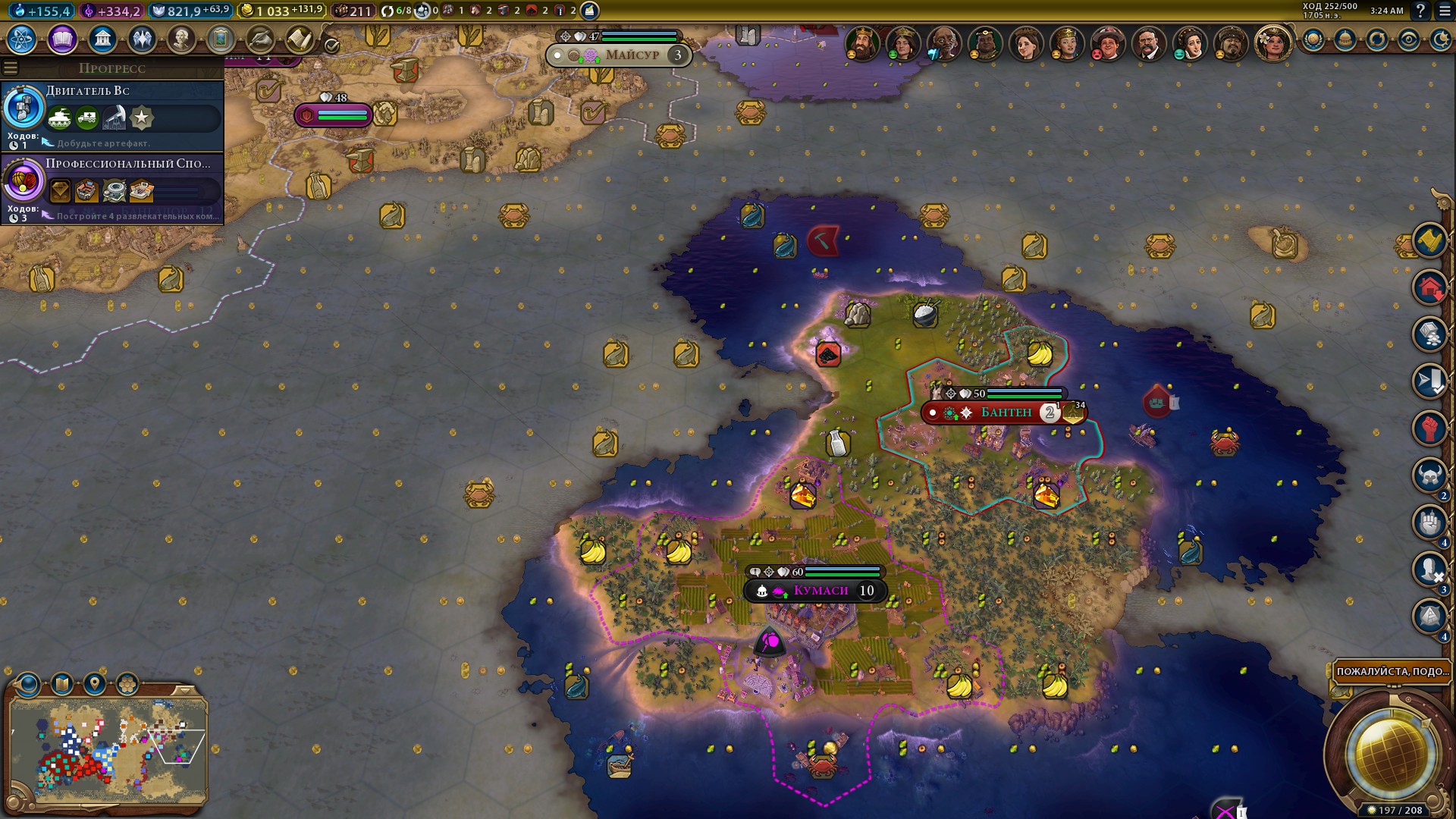
I dare to say that with all the aforementioned new mechanics, the expansion managed to capture the concept that the designers wanted to embody even in the fifth part of the series. Specifically, to turn decisively every first game into a unique story.
With the introduction of Golden Age points, many familiar activities such as clearing the civilization’s borders from barbarian camps have gained new meaning. The same excitement has returned to exploration. Moreover, the game itself encourages the gamer to take active actions.
You can be any kind of pacifist, but it is sometimes impossible to refuse new crisis alliances when there is an opportunity to capture a border city without backstabbing and earn a lot of money for initiative. Without the invisible guiding hand of Rise and Fall, your one and a half archers would forever stand in the same positions until the most boring cultural victory in the history of boring cultural victories.
And colonizing distant virgin lands is now less lazy towards the end of the game.
And alliances with dummy players can now happen purely scientific or purely trade-related. And that means that diplomatic options now make sense to read instead of automatically spamming the “Refuse” button! Isn’t that a titanic achievement?
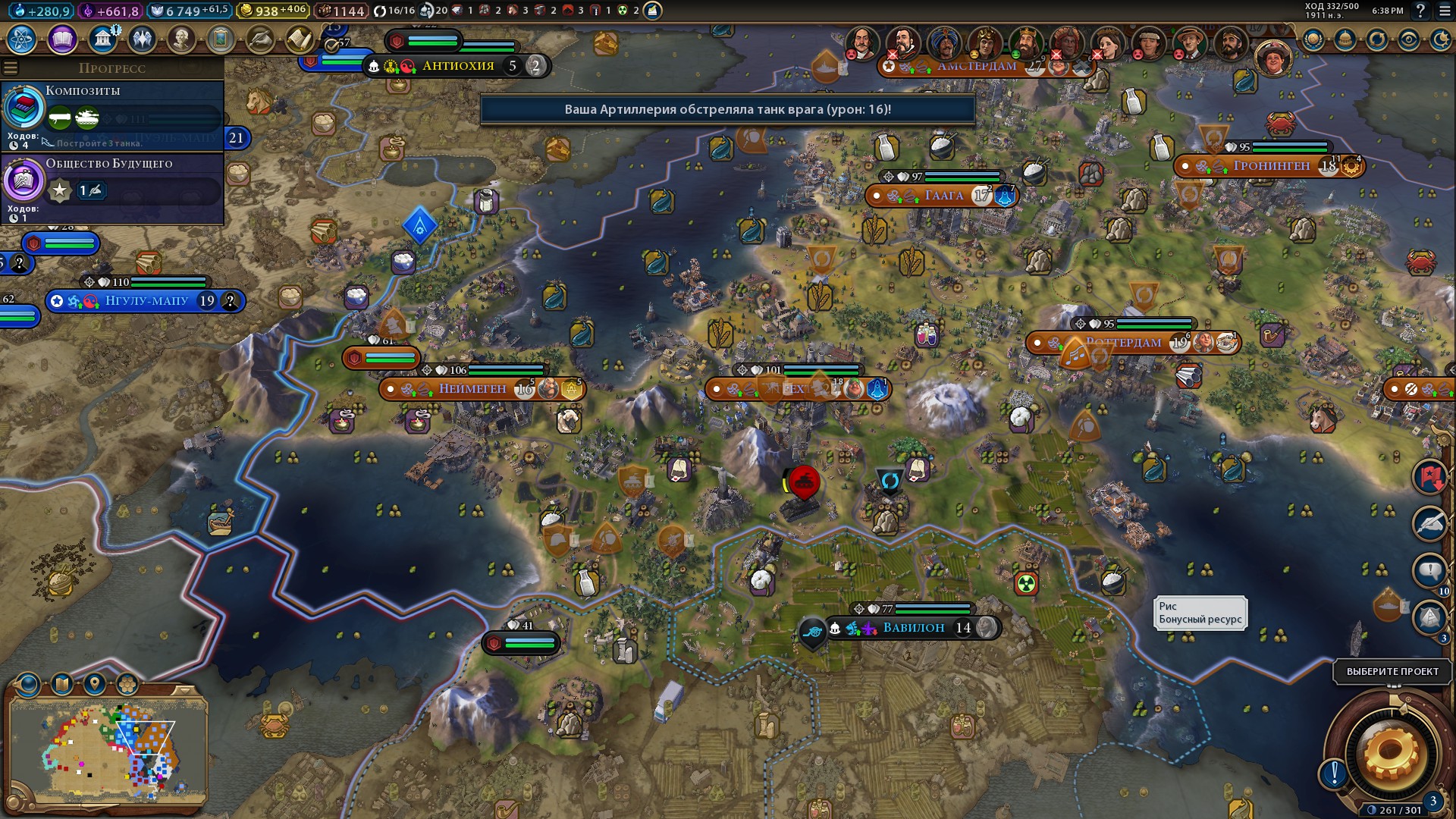
My first victorious RnF card brought me two big surprises.
The first one happened when four computer leaders formed a crisis alliance and then stormed the same city for two hundred years in a row. It turned out to be a strange thing, like a proxy war. The game promised bonuses to the dummy players not for the capital, but for a remote northern settlement, which caused the standard front line to move away from my direct borders with the main aggressors, both from them and, in general, from me. I’ve never had such unusual fights in Civilization before.
The second surprise was the endgame, in which my Netherlands, which had eaten up two-thirds of the globe, suddenly fell into the Dark Ages. The empire began to crack at the seams, the captured distant lands began to demand mandatory military presence, direct war became too troublesome, distant and close neighbors began to annoy openly, but world cultural dominance allowed me to limp towards a victorious outcome. That turned out to be realism.
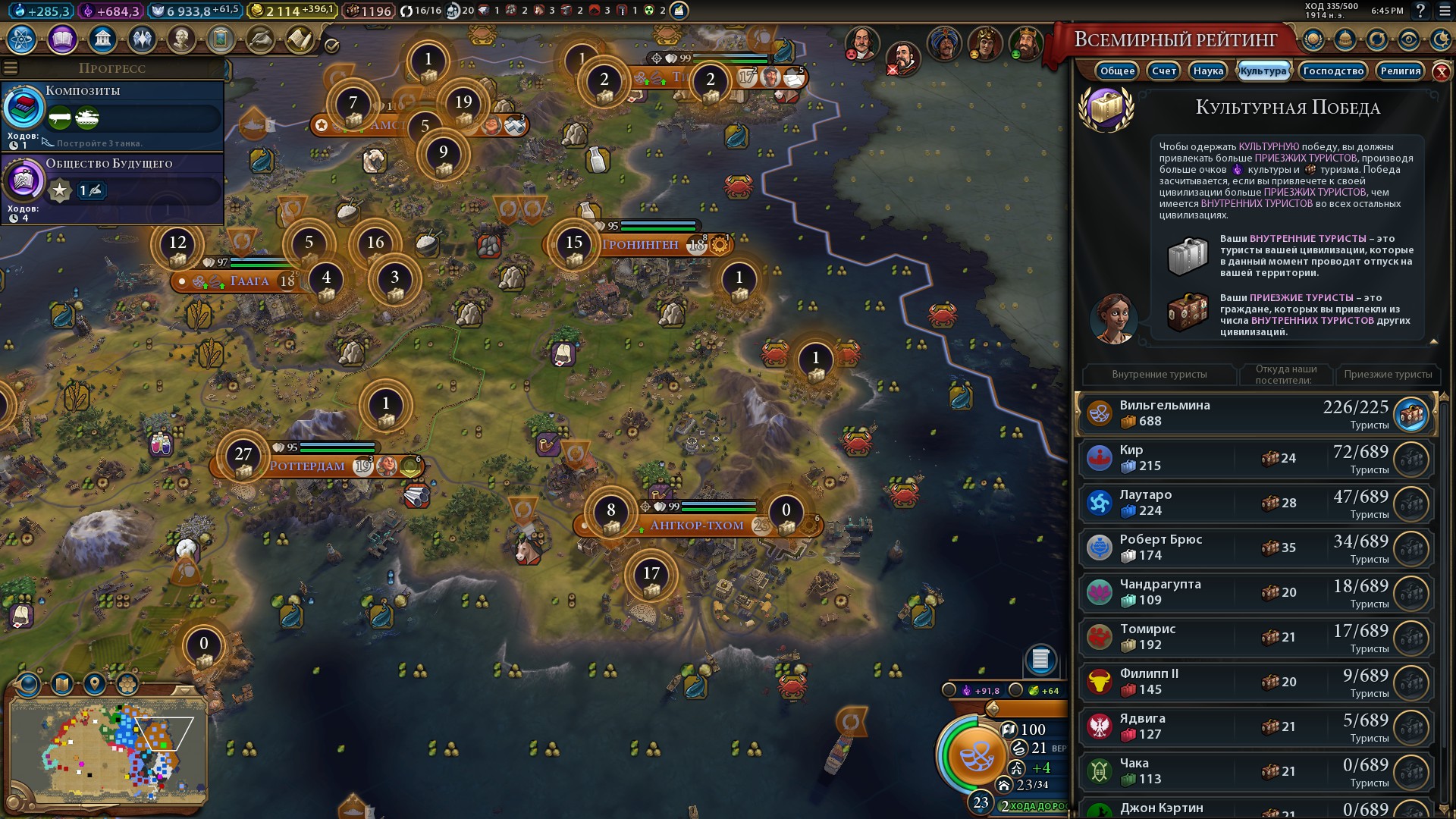
In general, dear owners of Civilization 6 keys, Rise and Fall is definitely worth getting. Every first mechanic works for the common good, and every first controversial moment of the original, if not completely fixed, fits better into the game.
As an expansion, RnF is a solid ten out of ten.
Share
Discuss
More Reviews



